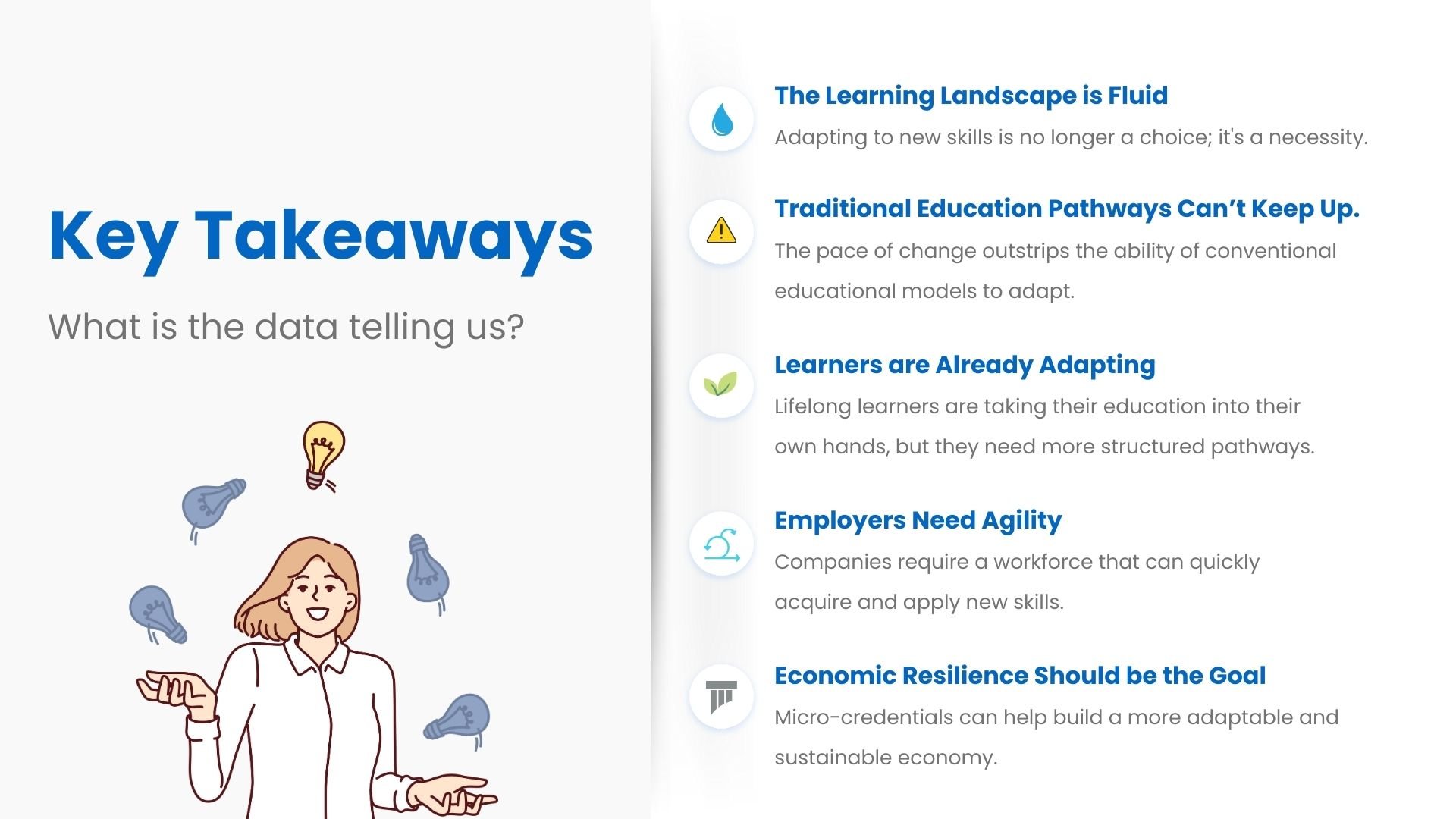My Journey through the Micro-credential Revolution: A Quest for a Smarter Workforce
Greetings to all who wander into the realm of micro-credentials and the endless possibilities they promise. 👋
My name is Robert Bajor, and I’m the CEO of Micro-credential Multiverse. This week, I had the privilege of sharing my vision and the transformative potential of micro-credentials with the community at Portal Schools (Portal Learning). For those who couldn't join us, or those who wish to reminisce, here’s a recap explicitly tailored for the core stakeholders of Micro-credential Multiverse; Institutions, Businesses, and Non-traditional professional development providers.
Exploring the World of Micro-credential Ecosystems
(The deck - Below) Before I dig into a summary, here is the slide deck I presented.
For the sake of context, I had the opportunity to present this deck to a room full of 20 teenagers so it was a fun exercise to distill some of the more complex areas of my work into a format that is readily digestible by a more general audience.
Note: Below the deck, I’m going to continue this blog post with a focus on institutions, businesses, and non-traditional program providers. This will include a recorded version of the slide deck!
Part 1: The Challenge of Skill Adaptation in the Job Market
Like many folks in the workforce today, the genesis of my journey into the world of micro-credentials was shaped by personal shifts and pivots in my own career. Over the past decade, I've also witnessed the rapid and sometimes overwhelming changes in the job market for others in very different sectors than my own. To kick off this blog post I’ll focus on the large-scale shifts in the economy (from a skills perspective) and tease out some main challenges for each of Micro-credential Multiverse’s key stakeholders.
Actionable Example for Institutions
Common Challenge
A traditional university recently noticed declining enrollment in four-year degree programs. (Right)
Solution
To adapt to this challenge, many institutions understand the need to incorporate more dynamic, skills-based modules that align with real-time industry and labor market needs.
Source: Hanson, Melanie. “College Enrollment & Student Demographic Statistics” EducationData.org; October 1, 2023, https://educationdata.org/college-enrollment-statistics
Actionable Example for Businesses
As someone at the forefront of this domain, I can't stress enough the importance of agility. The roles we hire for today might (will) evolve tomorrow.
Thus, businesses need to be in the loop, adapting to labor market shifts the fly. I encourage anyone thinking about micro-credentials from a business perspective (whether it’s internal or external training) to take a look at page 3 (right), page 4, and page 5 of the presentation.
Actionable Example for Non-traditional PD Providers
The canvas for including skills-based micro-credentials into your strategy is necessary, vast, and rife with possibilities for the future of your org and the communities you serve. With traditional socioeconomic structures lagging, I strongly encourage folks in these spaces to consider the needs of their unique community of learners and build from there.
This often includes developing “persona” guides or “learner journey-oriented” exercises to see where the incorporation of micro-credentials can have the most significant (and measurable) impact.
Part 2: The Emergence of Microcredentials
I've always been fascinated by the modular structure of education - chock it up to my formative background in science.
Imagine deconstructing a vast body of knowledge into bite-sized pieces that one can digest at their own pace and on their own terms.
That's the magic of micro-credentials.
After introducing the idea of micro-credentials and where they fit in, I spent a little bit of time talking about the two main contributors to a shift to skills-based learning, recognition, and hiring.
First, from the skills perspective
Then, from the perspective of learners who are already adapting in real time.
Actionable Example for Businesses
Common Challenge
A dynamic technology company must quickly compete with its competitors to adopt an ethical AI-driven approach to serving its clients.
Possible Solution
This company may consider hiring a candidate with a micro-credential in AI ethics, a niche yet increasingly vital area. Despite the absence of a conventional degree in AI, this candidate can showcase their expertise, be quickly onboarded, and immediately start contributing to the company strategy.
For example, this short course on Ethical Issues in AI is provided by Colorado University (Boulder).
Actionable Example for Institutions
By integrating micro-credentials within your conventional degree programs as new entryways or on roads from non-traditional learning pathways, you can create a flywheel that attracts a broader range of students eager to craft their unique educational pathway that can support lifelong learning.
In this section, I’ve included some key takeaways for folks in the institutional space to consider. (Right)
Actionable Example for Non-traditional PD Providers
Ensure the quality and relevance of your training programs by aligning them with the desired outcomes of your unique community of learners.
You may achieve this goal by considering the following:
Creating/modifying your existing learning pathways to emphasize skills acquisition and signaling.
Collaborate with a local educational provider to connect your programs with pathways into more traditional learning and employment pathways.
Coordinate with other non-traditional PD providers to create a more robust and interconnected set of experiences that appeal to a broader and more diverse audience of stakeholders..
Part 3: Verifying Skills with Digital Badges and Micro-credentials
Imagine a world where every skill you acquire gets a digital stamp, accessible and verifiable instantly. That's the world I envision, and digital badges are the bricks for this foundation.
Actionable Example for Non-traditional PD Providers
An online platform started offering digital badges for soft skills, such as communication and teamwork. The uptake was phenomenal, and employers began recognizing these badges, leading to successful job placements.
Fun fact: Well over half of employers prioritize candidates with superior soft skills. (Almost 2/3 in fact - See the graphic to the right or the original slide deck for more info on this)
Actionable Example for Institutions
There are a variety of ways to incorporate digital badges and micro-credentials into your existing strategy. Some institutions like The University of Texas and Savannah Technical Colleges have embedded micro-credentials into their degree pathways, professional certificate programs, and various other ways to revisit their portfolio relative to shifting demographics, demands, and economic imperatives.
Actionable Example for Businesses
In my conversations with industry leaders, it’s clear that they seek transparency and trust above all. In other words, when they spend the time and money necessary to signal an open role, navigate an applicant pool, curate the most qualified candidates, interview, and eventually onboard - they need to know that they’re investing that time efficiently and wisely.
Aside from the skills-driven clarity, Digital badges also offer a lens through which an employer (or credential recognizer) can view a candidate’s true, verifiable, potential.
I’m not going to spend too much time in this post discussing the need for interoperable, portable, and verifiable micro-credentials, but I did run through it briefly in the recorded session if you want to give that a look.
Video Recording
Congratulations for scrolling all the way to the bottom of the post! To reward your efforts, you’ll see here that I went ahead and recorded the entire presentation below! Interestingly enough, we haven’t had a Youtube account yet, so this was a good excuse to finally create one and upload the video. Enjoy (and don’t forget to like and subscribe!)
Closing
It’s been a minute since I’ve updated the resource section of Micro-credential Multiverse. This is due to the fact that we’re a small team with big dreams (and we don’t believe in “sort of doing something”). We’ve been hard at work serving a variety of clients from the three stakeholder groups I’ve mentioned here, and we’re always getting better at tooting our own horn. In the coming weeks, we will be posting a number of stories about the work we did over the summer, some of which will continue into 2024 - so stay tuned!
If you enjoyed this article, please consider:
🕊 Following me or my new company Micro-credential Multiverse on LinkedIn.
💌 Subscribing to my newsletter on LinkedIn to get these posts delivered conveniently to your inbox.
📸 Liking this video and subscribing to our Youtube channel!
🌎 Sharing this article with someone in your network.








